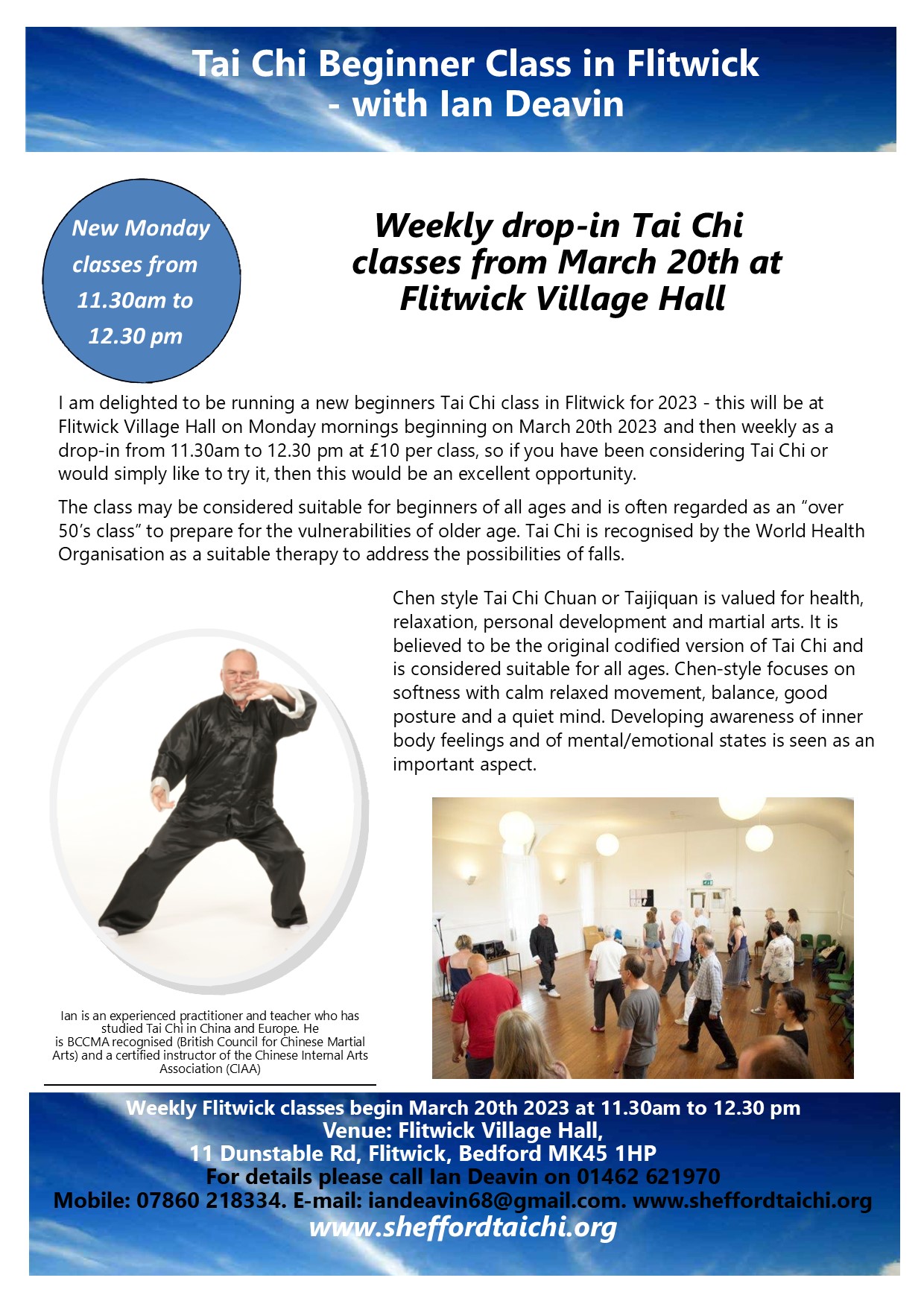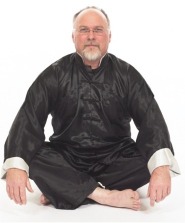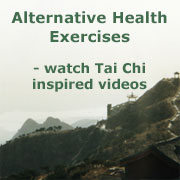Everyone ( I suspect ) could play chopsticks with a little trainingand that is fine for most people – for example to improve balance enough to greatly reduce vulnerability to falls. The World Health Organisation researched falls prevention exercises and found that Tai Chi (and a similar commercial program) reduced vulnerability by 50%.
This may be why we now have a World Tai Chi and Chi Kung Day on the last Saturday of April each year.
On the other hand to become a concert pianist takes a lot more effort.
Similarly whether performing Chopsticks or a major classical work we would expect to learn some good time before the performance – not wait until the due date. Likewise we should not wait until we need the skill of Tai Chi eg when we have a “fall”, but should learn before we can foresee the need and still have the energy to learn.
Which is why I often refer to an “Over 50s” class – if you start to learn at 50 then you will have learned enough by the time you need it – probably around 60?
Although let’s be fair to do Tai Chi at any level one needs to be at least a bit serious – but the continuum is quite wide, from people who practice once a week for health all the way up to students who practice for many hours each day and have world-class martial arts skills. Like any other physical skill development requires commitment at an appropriate level.

I am delighted to be running a new beginners Tai Chi class in Flitwick for 2023 – this will be at Flitwick Village Hall on Monday mornings beginning on March 20th 2023 and then weekly as a drop-in from 11.30am to 12.30 pm at £10 per class, so if you have been considering Tai Chi or would simply like to try it, then this would be an excellent opportunity.
It seems most people would like “some Tai Chi” – in the sense that they would quite like it in their lives, but only in a limited sense like they might participate in a favorite sport – they do not have or are not in a position to commit more than a limited time to acquiring this skill. Once we recognise this and accept it then we can see that it is perfectly sensible to do a limited amount of practice.eg to learn a short form or do a limited series of exercises. Not everybody wants to be a Tai Chi master – most of us are quite happy achieving lesser goals in promoting our health.
Dissecting the components of Tai Chi we can recognise the way that Taoist Yin/Yang theory enables us to understand this way of creating balance in ourselves – coupled with Buddist meditation which helps us to clear our minds and live in the moment.
Chi Kung – it has been said that all Tai Chi is Chi Kung but not all Chi Kung is Tai Chi. We use internal energy work ( literal translation of Chi Kung ) to dissipate tensions and promote corrections in structure and movement. Then we can identify the model of energy meridians – a concept which helps us to understand the relationships within our bodies.
The practice of Tai Chi is a totally holistic process – using its foundations in Taoism and Buddhism which offer entirely practical ways to develop all aspects of ourselves. For example we use physical exercise and work with training partners to reduce our sensitivity to confrontation or daily lower stress levels.
We develop a personal understanding of how Yin and Yang work and how we can foster awareness through meditation.
It is certainly to be hoped that students in their early years should not require much work in loosening the body – we hope that a teen or twenties body has not accumulated too much internal tension – where this is an issue it should be dealt with. Regular work can therefore focus on building structure and relaxed resilient strength – using tendons and fascia rather than major muscle groups ( these can come later) martial practice is usually indicated – eg low stances, long forms, partner work and weapons forms.
Tai Chi Class cancellations
Shefford – Sunday
April 9
Shefford – Monday
April 10
Biggleswade – Wednesday
Flitwick – Monday
10th April
1st, 8th and 29th May
28th August
25th December
1st January
When we find Tai Chi in our middle years eg 30+ then we may well be looking to put a good amount of effort into our practice and perhaps to explore the martial aspects. Fortunately the training at this time is the same as for other espects but with the emphasis on loosening, improving structure and building resilient strength.
There is ample opportunity to explore the literature, the videos and the courses available, and you are likely to have the resources which enable you to invest in your practice.
The issue of Tai Chi for people in later years eg over 50 really exemplifies popular interest in the subject, since if we come to Tai Chi in our later years it is generally for health reasons with a view to extending a good quality of life, to address our vulnerability to falls and hopefully extend our lifespan. This requires a regular low energy level of activity with the focus on loosening and rebuilding a resilient structure.






